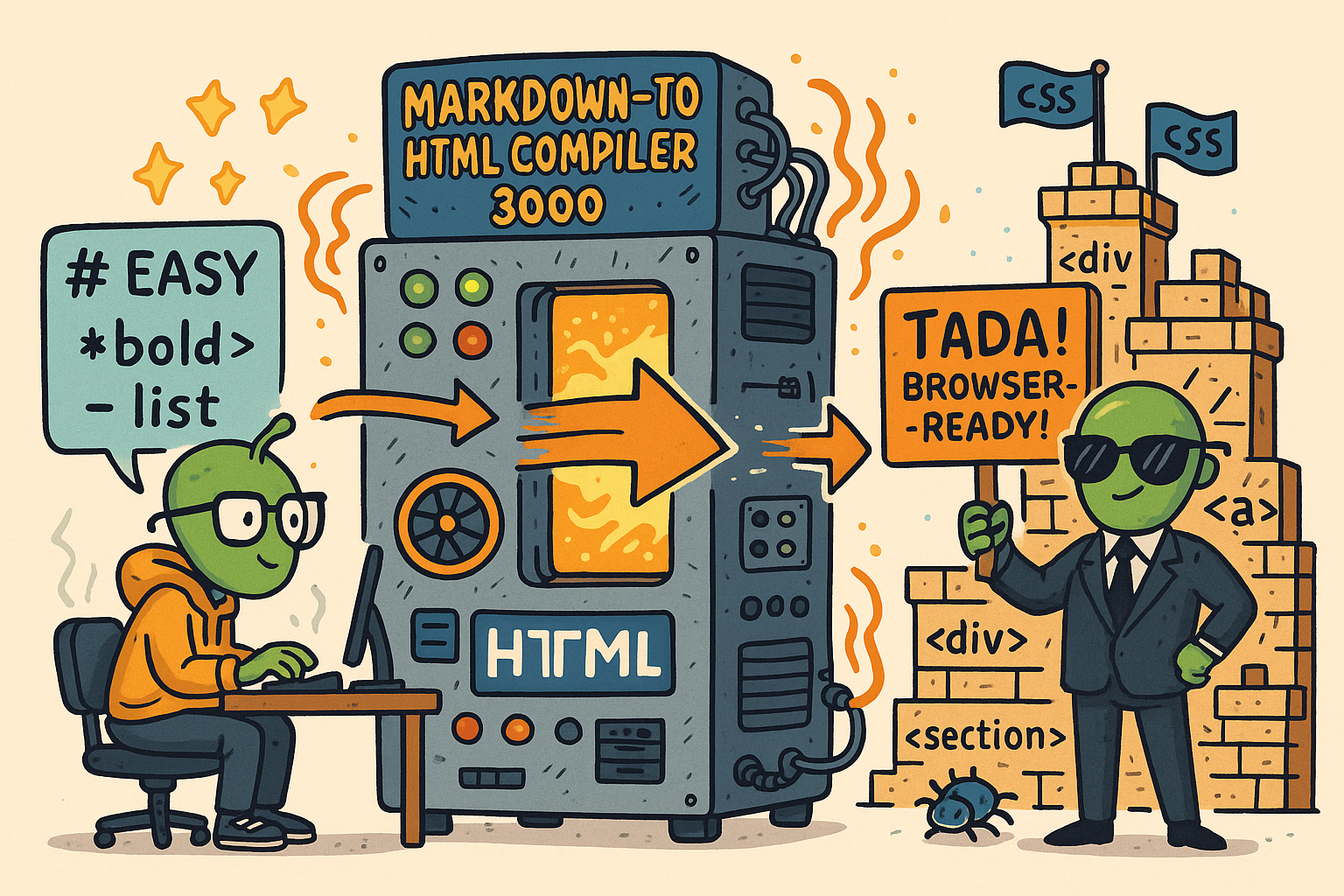Why Markdown Instead of HTML?
Short answer — use Markdown when you want to focus on content, then turn it into HTML when you publish. Here’s why:
- Faster to write: minimal syntax, fewer tags to remember.
- Readable as plain text: great for reviews and collaboration in Git.
- Portable: the MD format works across tools, editors, and platforms.
- Perfect for docs: MD for documentation keeps structure clean (headings, lists, code blocks).
- Easy publishing: convert MD to HTML in seconds when you’re ready to ship.

This article compares Markdown vs HTML from a practical perspective. We’ll look at writing experience, version control, documentation workflows, and how to go from Markdown → HTML without friction.
Markdown & HTML in a Nutshell
Markdown is a lightweight markup language that uses
simple syntax (like # Heading, **bold**,
`code`) to format text. Files typically use the
.md extension.
HTML is the web’s presentation layer
(<h1>, <strong>,
<code>). Browsers render HTML directly. Most teams
write in Markdown first and then generate markdown html for
publishing.
Markdown
# Project Title
- Simple syntax
- Easy to read
**Bold**, *italic*, and `code`HTML
<h1>Project Title</h1>
<ul>
<li>Simple syntax</li>
<li>Easy to read</li>
</ul>
<strong>Bold</strong>, <em>italic</em>, and <code>code</code>Why Use Markdown Instead of HTML?
1) Write faster, think clearer
Markdown keeps you in the flow: you write content, not tags. That makes drafts, notes, and specs much quicker to produce and review.
2) Clean collaboration & version control
Plain-text diffs are easy to review in Git. Line-by-line changes are readable, which is rarely true for verbose HTML.
3) Structured docs without boilerplate
Headings, lists, tables, and code blocks are first-class citizens. That’s why md for documentation is the default across many developer teams.
4) Portable content; flexible output
The same md format can become website pages, PDFs, or help center articles. You can generate markdown to html, or keep raw Markdown for internal knowledge bases.
5) Publish-ready with one step
When it’s time to ship, simply convert md to html. You get clean, semantic markup that browsers (and search engines) love.
Markdown vs HTML: When to Use Each
Use Markdown when…
- You’re drafting articles, READMEs, or tech specs.
- You need a lightweight format for docs ( markdown in html comes later via conversion).
- You work in repositories and want readable diffs.
- You want content that converts easily to multiple outputs.
Use HTML when…
- You’re building interactive layouts or complex components.
- You need fine-grained control over structure and attributes.
- Accessibility, metadata, or custom elements are required.
From Markdown to HTML: The Easy Way
When you’re ready to publish, use our browser-based tool to
convert MD to HTML
in seconds. Upload your .md file (and images, if any);
download clean HTML that’s ready to host.
Prefer code? Libraries like marked or
markdown-it can render markdown html inside web
apps. Static-site generators (Hugo, Docusaurus) compile Markdown to
production HTML as part of the build.
“Markdown in HTML”: What It Really Means
You can’t paste raw Markdown directly into a browser and expect it to render — browsers only read HTML. To use markdown in html, parse the Markdown first and inject the resulting HTML into the page.
JavaScript example
import { marked } from "marked";
const md = "# Hello, Markdown";
const html = marked(md); // markdown → html
container.innerHTML = html; // inject into your pageCLI example (Pandoc)
pandoc input.md -o output.htmlConclusion
For writing, collaboration, and docs, Markdown keeps you fast and focused. For publishing, HTML is the universal target. The smoothest workflow is simple: draft in Markdown, then use a reliable markdown to html step when you’re done — for example with our Markdown to HTML converter.